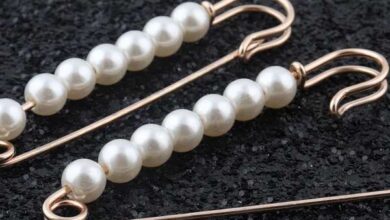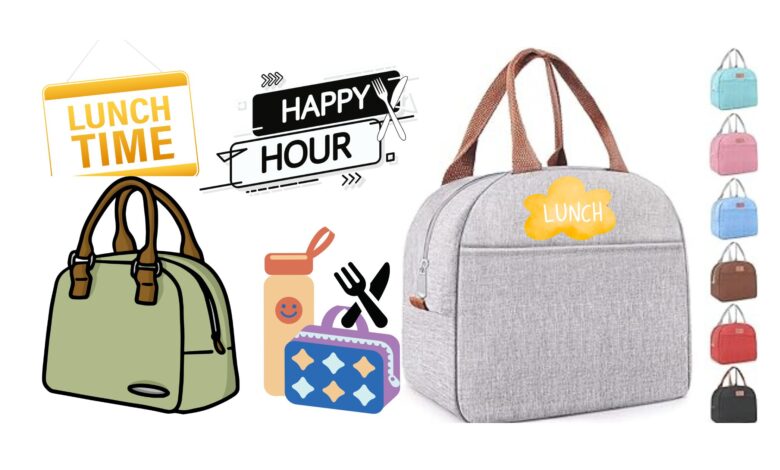
A lunch bag is a hand-held container used to transport food. It is used to carry lunch and can stay upright when packing, moving, and unpacking. This differs from a typical lunch box, which is used straight and vertically supported.
What is the difference between a lunch bag and a lunch box?
Lunchtime Essentials: A Guide to the Best Lunch Bag
Lunch bags are ended with fabric. They come in a variety of sizes, flairs, and intentions to suit different favorites and needs.
Active Lifestyle
A lightweight and compact lunch bag can be a convenient choice for people. It allows for easy transportation, whether they’re traveling to work, attending school, or engaging in outdoor activities.
Cold Meals
Both lunch bags and lunch boxes can keep cold meals, such as salads, snacks, or yogurt, cool. However, lunch boxes often provide superior protection, especially for extended periods.
While lunch bags may be more affordable and durable, reusable lunch boxes can offer long-term worth and cost-effectiveness.
Sustainability
A reusable lunch bag, rather than a lunch box made from maintainable materials such as biological cotton or recycled polyester, can knowingly reduce plastic waste and your eco-friendly impact.
Lunch Box
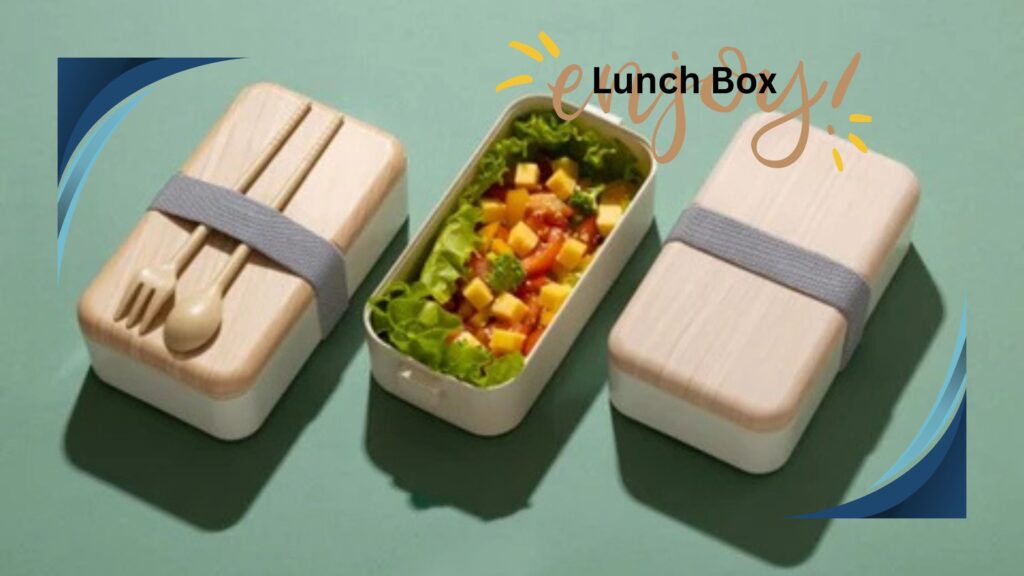
The lunch box is a small dish, usually made of metal or plastic, with a handle for carrying one’s lunch from home to school or work.
Lunch boxes are designed to keep meals at the ideal temperature, whether you prefer hot soups or cold salads. Their insulating properties make them a dependable choice for people who prioritize food quality and freshness.
Inactive Lifestyle
Those with inactive lifestyles may benefit from a lunch box’s superior insulation and organization. Its ability to keep food temperatures and classified design can enhance the overall ingesting experience.
Hot Meals
A well-insulated lunch box is ideal for warm, hot meals, such as soups, stews, or leftovers. It ensures your food remains at the desired temperature, improving flavor and satisfaction.
Lunch bags typically have a lower early cost linked to lunch boxes. They are budget-friendly.
Study the overall ecological footprint of the product, including packaging and industrial processes.
Delicate Recommendation
If you’re looking for a trustworthy and stylish lunch bag, I highly indorse checking out the bentgo lunch bag. It’s perfect for anyone best lunch bag for women and awesome lunch bag for men “
Different types of lunch boxes
Stainless Steel Lunch Boxes
Stainless steel lunch boxes are an enduring classic in Indian homes. Known for their toughness and sleek appearance, they are non-toxic, rust-resistant, and do not retain food odors, making them a clean choice.
Uses
Stainless steel lunch boxes are ideal for booming both dry and semi-liquid diets, making them perfect for the varied Indian cuisine that includes everything from roti and sabzi to dal and rice.
Pros
- Durability: Stainless steel is long-lasting and hard to damage, capable of enduring the rigors of daily use.
- Hygienic: The non-porous surface stops bacteria buildup, ensuring your food breaks safe.
- Eco-friendly: Reusable and ecological, reducing your environmental footprint.
Cons
- Weight: Stainless steel is heavier, likened to plastic or silicone replacements, which might be a consideration for those multiple loud items.
- Heat Retention: Deprived of insulation, stainless steel does not keep food warm for long periods.
Glass Lunch Boxes
Crystal lunch boxes are becoming popular due to their non-toxic and non-reactive properties. They are flawless for those who choose to avoid plastic.
Uses
Glass lunch boxes are ideal for reheating food in the zap and storing leftovers. They are also excellent for office lunches where access to a microwave is available.
Pros
- Non-toxic: Free from harmful elements like BPA, ensuring your food leftovers are safe.
- Microwave Safe: Glass can heat food directly, providing convenience.
- Odorless: Unlike plastic, glass does not retain food smells, ensuring your lunch always tastes fresh.
Cons
- Fragility: Glass can break or crack if released, requiring careful treatment.
- Weight: Heavier than other resources, which may be better for portability.
Plastic Lunch Boxes
Plastic lunch boxes are a basic in line for their foamy nature, affordability, and various dimensions and forms.
Uses
Handy for both children and adults
Flexible lunch boxes are used for packed lunches in skills, workplaces, and travel.
Pros
- Lightweight: Easy to carry, making them ideal for kids and those on the go.
- Affordable: A budget-friendly option that is nearby to everybody.
- Variety: In numerous designs, colors, and sizes, cuisine is available to different preferences.
Cons
- Chemical Exposure: There is a potential risk of BPA and other harmful elements, so choosing BPA-free options is vital.
- Durability: Less durable compared to steel or glass and may need frequent replacement.
Bento Boxes
Originating from Japan, Bento boxes are compartmentalized lunch boxes that allow for portion control and diversity in meals. They are gaining fame in India for their organized and aesthetic appeal.
Uses
Bento boxes are perfect for packing a balanced meal. With separate sections for different foods, they are ideal for school lunches, picnics, and even office meals.
Pros
- Organization: Keeps different foods separate, upholding their flavors and textures.
- Portion Control: Helps manage food helpings effectively, which is excellent for health-conscious individuals.
- Aesthetic: Often comes in visually appealing designs that make meals more enjoyable.
Cons
- Space: It can be bulky, especially for those with limited bag space.
- Cleaning: Multiple slots can be tedious to clean, needing more effort.
Insulated Lunch Boxes
Insulated lunch boxes are designed to keep food at the desired temperature, whether hot or cold, for long periods. This makes them mainly valuable for India, where keeping food temperature can be exciting.
Uses
Sequestered lunch boxes are great for carrying meals that need to stay deep or relaxed, such as soups, curries, and salads. They are flawless for long work hours, travel, and outdoor activities.
Pros
Temperature Control: This product maintains food fever for hours, protecting your meal so it is ready to eat when you are.
- Versatility: Appropriate for various foods, from hot parathas to cold salads.
- Durability: Often comes with robust ideas, making them long-lasting and excellent.
Cons
- Size: It can be more massive than regular lunch boxes, which might be a reflection for those with limited carrying space.
- Price: They are mostly more innovative due to their insulation features, but they are worth the investment for those who need illness control.
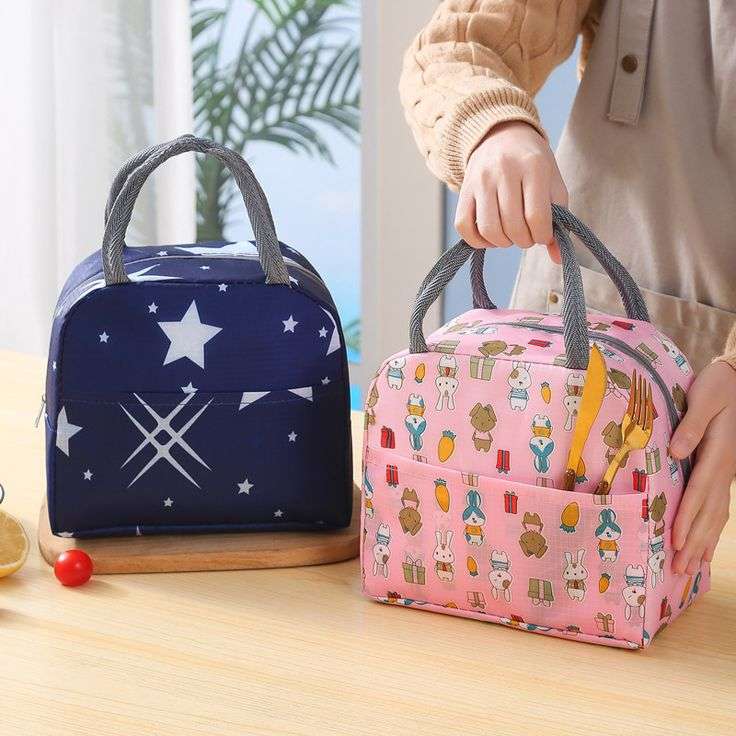
How to Choose the Right Lunch Box?
When selecting the correct lunch box, consider the following factors:
- Material: Decide between stainless steel, glass, plastic, or shielded based on your needs and preferences.
- Portability: Ensure the lunch box is easy to carry, specifically if you have other items to transport.
- Capacity: Choose a size that fits your typical meal slices. Smaller boxes for snacks and larger ones for full meals.
- Ease of Cleaning: Look for dishwasher-safe options or ones with fewer sections if you prefer less stress.
Advantages of Lunch Box
Superior Insulation: Lunch boxes are prepared with high-quality lining to maintain food heat, ensuring that your meals stay hot or cold for long stages.
Organized Meal Planning: The structured cubicles in lunch boxes allow for planned meal planning. You can easily separate different food items, avoiding them from mixing and making your meals fresh.
Durability and Longevity: Lunch boxes are built to last, withstanding daily use and so long as long-term value.
Variety of Styles and Sizes: Lunch boxes come in various styles, sizes, and dyes to suit different favorites and needs, whether you’re a student, a skilled, or an outdoor enthusiast.
Disadvantages of Lunch Box
Heavier and Bigger: Lunch boxes are heavier and bulkier, especially when packed to the max. This might not be ideal for people who want something easy to carry around.
More Money: Lunch boxes can cost more than lunch bags, especially if they have excellent features or are made from top-notch materials.
Not as Flexible: Some lunch boxes might not be as flexible as lunch bags, especially for specific food or oddball items.
Overall, lunch bags and lunch boxes have their benefits and drawbacks. But which is the right choice for you? In the next section, we will discuss factors to consider when picking a lunch bag or lunch box.
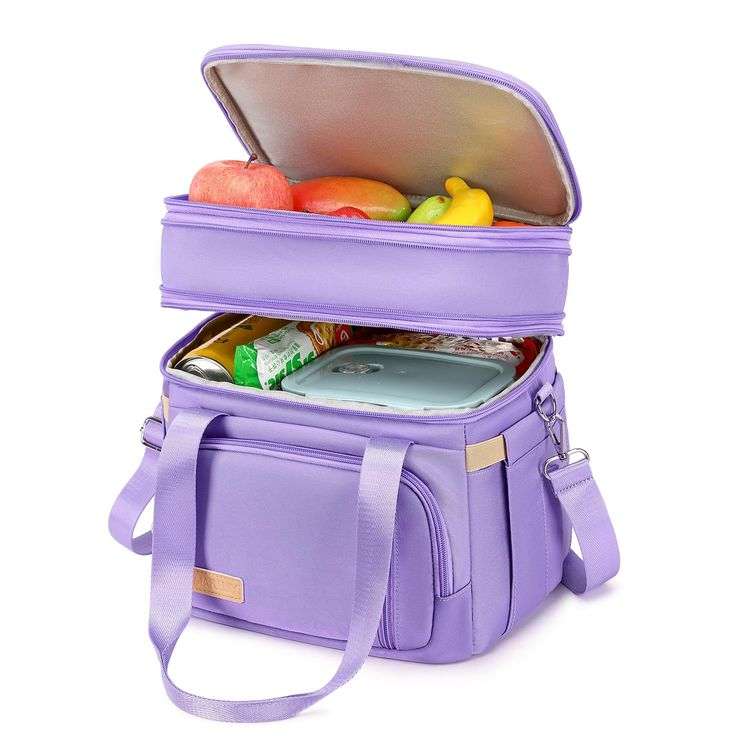
Advantages and Disadvantages of Lunch Bag
Lunch bags offer a frank and eco-friendly solution for carrying teatimes. Their lightweight and compact design makes them easy to carry, while their flexibility allows them to hold a variety of food items, from snacks to salads.
Advantages of Lunch Bag
Easy to Take with You: Lunch bags are light and straightforward, perfect for people who are always on the move.
Can Do It All: They fit different kinds of food, from sandwiches to salads, so you can easily mix and match your meals.
Cheap: Lunch bags are usually more affordable than lunch boxes, so they’re a good deal if you’re looking to save money.
Suitable for the Planet: Using lunch bags that you can reuse helps reduce trash and is better for the environment because you don’t have to use plastic bags you throw away.
Anyone who needs to carry food or snacks external of home can habit a lunch bag
like a lunch bag for men also it can be good for lunch bag for women
Students: To bring lunch to section
Office workers: To bring lunch to work
Hikers and campers: To carry snacks and meals on outdoor quests
Commuters: To have a meal on the drive
Athletes: To bring post-workout snacks or mealtimes
Disadvantages of Lunch Bag
Limited Insulation: Cute Lunch bags may not successfully maintain food infections, especially during longer times or in extreme weather conditions. This can be a drawback for individuals who prefer hot meals or need to keep food cold for extended periods.
Lack of Structure: Items inside a lunch bag can become disorganized or crushed, potentially affecting the overall meal experience. This can be especially difficult for faint items like fruits or snacks.
Now that you have an overview of the lunch bag, the next section explores the advantages and disadvantages of lunch boxes to help you decide which is the right choice.
Advantages of the lunch bags
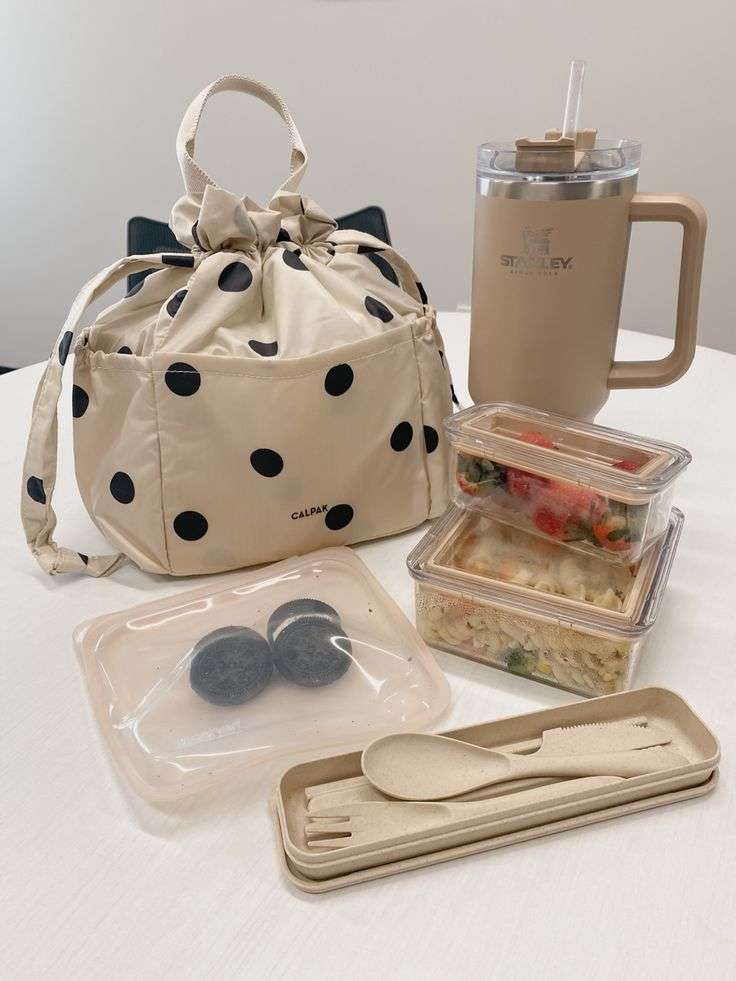
Heat and cold insulation
A lunch bag’s primary job is keeping food warm. It’s a bag made to keep food hot in the short term. Inside, there’s a layer of pearl cotton and aluminum foil paper, which is great for keeping heat in. Different sizes are available depending on what you need, and some even have reusable ice packs to keep things cold.
Durable
To have superior impact resistance, breaking and leaving scratches when pressed or impacted is difficult.
Sealing
When picking a lunch bag, the first thing to consider is how well it seals. Even though different brands use different ways to seal their bags, it’s super important that the bag seals well to keep your food fresh for longer.
Preservation
A test that measures how much moisture can get through checks the worldwide standard for sealing. High-quality lunch bags have 200 times less moisture permeability than similar ones, which means they keep food fresher for longer.
Maintenance instructions for the lunch bags
The food in the lunch bag can make it smell not good, so it’s essential to clean it often.
Please remove the top cover and clean it with a soft towel or sponge dipped in warm water or mild soap.
After you’ve cleaned it with soap, rinse it with clean water and then dry it with a clean towel.
To keep the top of the lunch bag looking nice, permanently remove any dust.
Precautions for the lunch bags
When washing the lunch bag, do not sprinkle water in a straight line on the box or the box body to avoid man-made harm to the bag and access to the insulation layer.
Open flame contact or sharp tool cutting is prohibited.
Avoid long-term exposure to rain, clamminess, and sunlight, affecting thermal protection.
To bring this to a close
So, there you have it! With the right lunch bag, you can take your lunchtimes on the go with ease and style. Remember to choose a bag that garbs your needs and favorites, whether a stylish tote, a useful backpack, or a solid lunch box. Packaging healthy and delicious meals can fuel your body and mind and make the most of your day.
Happy lunching!

